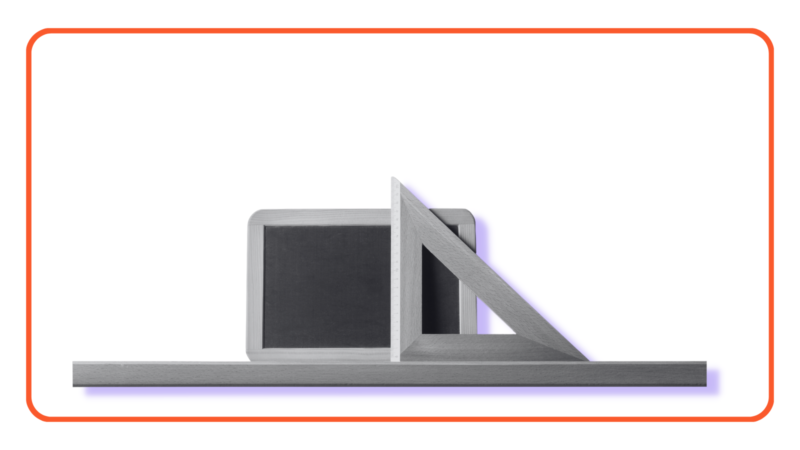The pandemic wreaked havoc worldwide, with businesses closing down, but an industry that witnessed an unprecedented boom was the food industry. Since people could not step out of the house, ordering food at home became prevalent.
Consequently, cloud kitchens boomed.
What is a cloud kitchen?
A cloud kitchen is a commercial facility for cooking food specifically for delivery. These kitchens are also known as a ghost, shared, or virtual kitchens.
Cloud kitchens come without the cost of traditional brick-and-mortar restaurants and allow food businesses to create and deliver food with minimal operational costs.
Setting up a restaurant from scratch can be an expensive feat.
Traditional restaurants offer deliveries, but their geographic locations have a certain degree of limitation. A restaurant in Clifton can deliver quickly to DHA, but what about far-flung areas like Gulshan-e-Iqbal or North Nazimabad?
Restaurants would probably have to open a branch there, which is costly. So instead, they use cloud kitchens.
Cloud kitchens optimize the overhead costs so food businesses can focus more on deliveries instead of worrying about a physical space for cooking and a dine-in area.
How do cloud kitchens work?
Cloud kitchens are commercialized food production facilities where several restaurants and food businesses can prepare menu items optimized for delivery.
Traditionally, a cloud kitchen space includes prep tables, vents, stoves, ovens, and sinks. Customers can order through online food aggregators, websites, or apps.
Cloud kitchens are also great for home chefs that don’t have access to commercial kitchens. They can operate their business using cloud kitchens.
These kitchens don’t just aid food entrepreneurs but also the customers. You don’t have to go through the hassle of making a reservation, dressing up, and commuting to the place. You can get the same food delivered to your house without much effort.
Benefits of a Cloud Kitchen
Cloud kitchens minimize the hassle of logistics and operational costs.
- Affordable startup cost
Food businesses don’t have to spend money to set up a physical restaurant. Instead of months or years, they can lease up space from a cloud kitchen and start operating in a few weeks.
- Lower operational costs
Traditional restaurants have to pay for expensive utilities, taxes, staff salaries, maintenance costs, etc. Food businesses operating through a cloud kitchen have to hire a few cooks. That’s it.
- Easy deliveries with increased reach
Cloud kitchens can accommodate more orders without over-burdening kitchen staff and reach a larger consumer base.
- Easy expansion
As the operation is limited to a kitchen, the total expenditure cost is much lower. So, food businesses can test new locations through cloud kitchen setups without investing in infrastructure.
Another significant advantage of a cloud kitchen is the liberty to change the menu at will or launch an item for a limited time, like soup or hot chocolate for winter and salads for summer.
It is also easy to discontinue an item if it doesn’t sell.
Cloud Kitchens in Pakistan
Cloud Kitchens became more common in Pakistan after the pandemic.
There are more than 100,000 food outlets across Pakistan. According to the Board of Investment, this industry is also the largest after the textile industry. It accounts for 27% of the value-added production and 16% of employment in the manufacturing industry.
Pakistan has always had a flourishing restaurant industry. Technology has made restaurants go from dine-in to online delivery. This has been aided by the lockdowns, increasing reliance on technology, and the internet.
Kitchual, Byte, and Lettus Kitchens are some of the cloud kitchens currently operating in Pakistan.
Foodpanda has also entered the playing field. It offers cloud kitchen services to food entrepreneurs looking to set up new businesses and existing restaurants that want to scale and expand.
FoodPanda, however, does not operate kitchens itself. It helps businesses expand by providing them with data about a specific location. It sets up the kitchen, but the business owner or restaurant themselves operates the kitchen. Foodpanda only takes care of the deliveries.
Hotpod was the first platform to bring the concept of cloud kitchens to Pakistan.
It is different from what foodpanda is doing. A restaurant looking to expand to additional locations gives a franchise to Hotpod, which then operates it in its cloud kitchen. Hotpod operates multiple brand franchises from a single cloud kitchen.
Unfortunately, Hotpod shut down recently.
Kitchual was launched in March of this year and offered three food items: biryani, fried chicken, and wings.
Their concept for cloud kitchens is data-driven. Their research found that biryani was the most popular item for online delivery, so they launched it first. They’ll be adding two new food items soon.
Byte was launched last year and had a similar model to Kitchual. Its primary focus is on low prices and more considerable sales volume. It raised $150,000 in seed funding last year.
Lettus Kitchens recently raised $250,000 in seed funding. Making it the second startup to do so after Byte. It aims to build a network of shared cloud kitchens for deliveries with partner restaurant brands.
It provides restaurants with a fully equipped kitchen with a very strategic location. This increases the market reach of partner brands with minimal overhead.
The Cloud kitchen concept globally is progressing with the highest Compound Annual Growth Rate (CAGR) compared to other segments in the restaurant industry.
With inflation and the changing social trends, cloud kitchens seem like the more efficient option. The concept, however, is relatively new, so it’s too soon to say whether it is a failure or a success.
But cloud kitchens are a godsend for homebodies who want good food without stepping out of the house.







